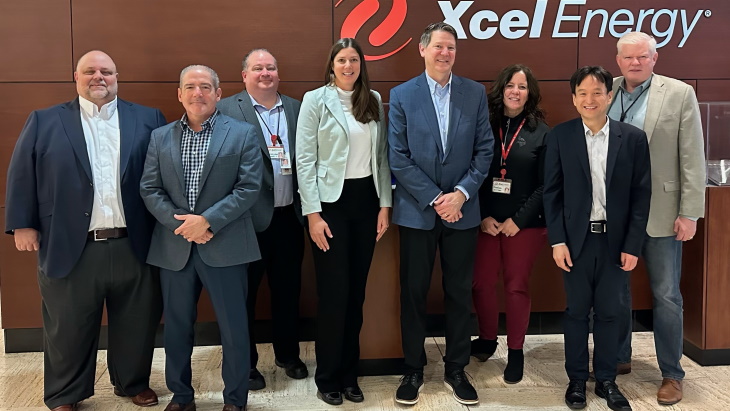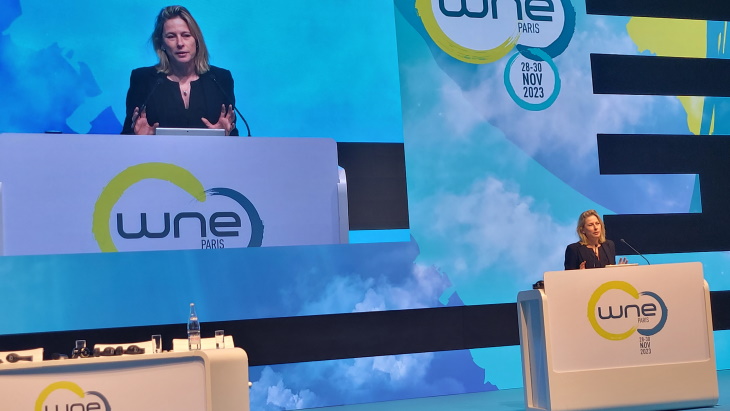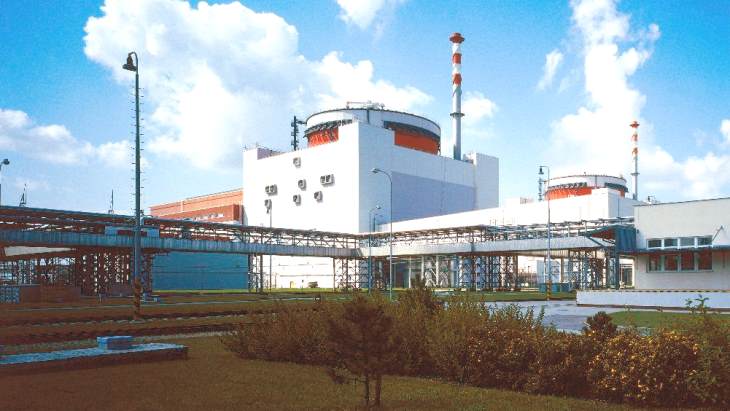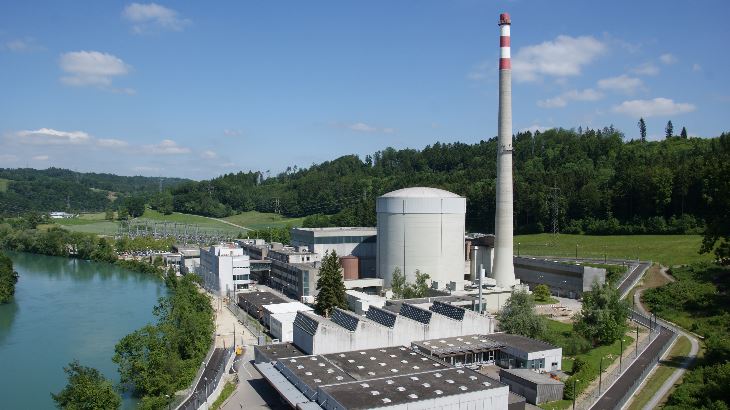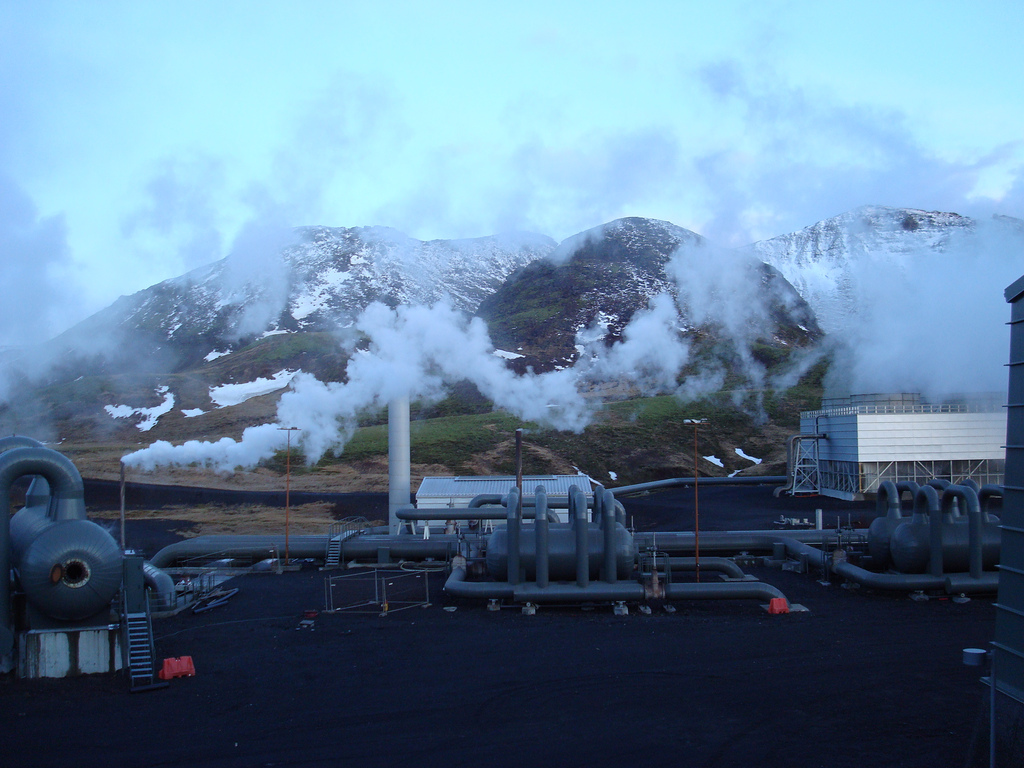
The complete research paper by Martina Leveni and Jeffrey M. Bielicki has been published in the Environmental Research Letters journal. (DOI 10.1088/1748-9326/ad0924)
The study introduces a strategy for geologic CO2 in a deep, porous, and permeable aquifer with sufficient geothermal heat flux. The emplaced CO2 will then be used as the fluid for geothermal heat extract, a system referred to as sedimentary basin CO2-driven geothermal utilization (SB-CO2DGU) or, more colloquially, CO2 Plume Geothermal. The heat in the CO2 that is brought to the surface can then be utilized in either of two scenarios:
Geothermal heat is used to regenerate the solid sorbent of the DACC process; or
Geothermal heat is used to generate electricity, and the excess sensible heat is used to regenerate the solid sorbent.
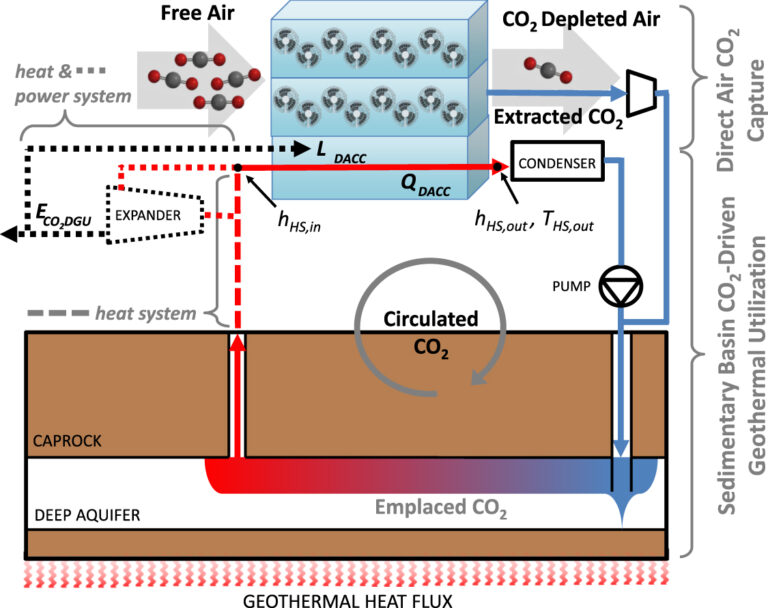
Two potential system configurations for DACCUS: heat system and heat and power system. (source: Leveni & Bielicki, 2023)
Deployment in the U.S. Gulf Coast region
Hypothetical but realistic scenarios for the deployment of the climate-benign DACCUS system were considered in the Gulf Coast region because of several factors – the presence of coal natural-gas power production facilities as points sources of CO2, the identification of well-characterized reservoirs for geological CO2 storage, and suitable geothermal heat fluxes and aquifer temperatures.
With sources of CO2 identified, the proposal is to prime the system with CO2 for five years before beginning its operation. A case study analysis indicates that five years priming will be enough, except if the formation thickness if more than 100 meters and under the assumption of maximum injection mass flowrate limited to 1 MtCO2/year/well. For thicker formations, an option would be to use them for Geologic CO2 storage for more than five years before utilizing the system for CO2 Plume Geothermal.
Combining sustainable technologies
The results indicate that deeper reservoirs (>3.5 kilometers) with higher geothermal temperature gradients (> 35 °C/km) can produce sufficient wellhead temperature for geothermally-heated CO2 to produce energy for DACC, with deeper and hotter reservoirs increasing DACC capacity. In almost all reservoirs considered in the study, CO2 Plume Geothermal can supply the electrical load of a DACC system.
The study presents an intriguing scenario where technologies designed to reduce greenhouse gas emissions – direct air CO2 capture, geological CO2 storage, and CO2 Plume Geothermal – enable each other and combine to create a sustainable system for large-scale CO2 storage and capture, while also potentially overhauling energy systems.


